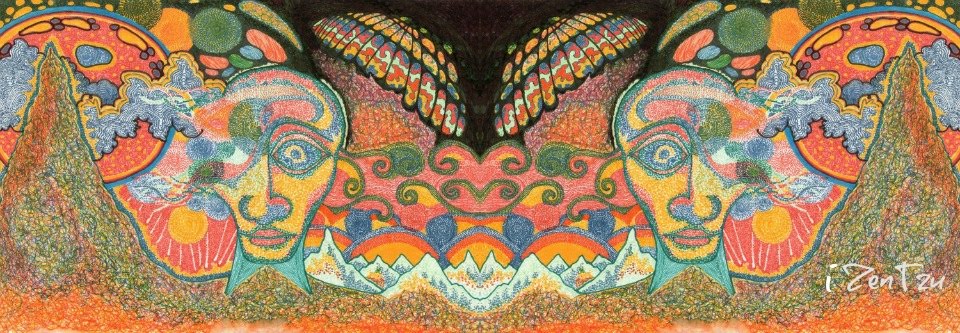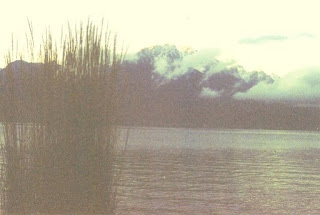You may or may not get rich trading carbon,
but you wont save the planet.
Macroblog: The Financial Times has uncovered some stumbling blocks on the road to carbon neutrality. Its multi-part report starts with a useful tutorial. According to the FT, however, all has not gone well:
The FT investigation found:
■ Widespread instances of people and organisations buying worthless credits that do not yield any reductions in carbon emissions.
■ Industrial companies profiting from doing very little – or from gaining carbon credits on the basis of efficiency gains from which they have already benefited substantially.
■ Brokers providing services of questionable or no value.
■ A shortage of verification, making it difficult for buyers to assess the true value of carbon credits.
■ Companies and individuals being charged over the odds for the private purchase of European Union carbon permits that have plummeted in value because they do not result in emissions cuts.
Chemistry of the Greenhouse Effect
The two gases contributing most significantly to the natural greenhouse warming of the earth are water vapor and carbon dioxide. Methane, nitrous oxide, ozone and sulfur hexafluoride are also greenhouse gases but make a smaller contribution to the greenhouse effect because their concentrations are so low. Climate.org
Corporations involved in the Emissions Trading Scheme have enjoyed $1.5 billion profits while carbon and methane emmissions across Europe are continuing to rise.
Indonesia could earn $100-$180 million from carbon trading
Indonesia has the third most forest cover of any tropical forest country, but has the second highest deforestation rate due to logging, clearing for agriculture, and forest fires. The country has expressed interest in a proposal to compensate tropical countries that reduce their deforestation rate. The profits made from the illegal logging trade while selling carbon trade credits for saving the tropical forests, will one day go down as one of the biggest corrution scandals of the century. It's called, burning the candle at both ends.
Getting Rich on Global Warming
In order for emissions trading to work correctly, the government has to set the various industry caps at levels low enough to provide for meaningful carbon reductions. Because industry lobbyists are powerful, that might not happen. This is the problem that has plagued the pilot project being run by the Eurozone under the banner of the Kyoto Treaty. The targets were far too easy to meet. As a result, the price of credits has plunged, and rather than reduce emissions under the program, emissions will actually rise.
This is not the only problem. If implemented poorly, the result can be extreme inefficiency. A case in point was offered up recently by Nature magazine. It cost $6 billion to reduce emissions of the HFC-23, a powerful greenhouse gas, which could have been reduced by buying about $130 million of equipment upgrades. The biggest problem of all is that polluters may game the system by building heavily polluting facilities that they can then make a buck off of by cleaning up and selling credits. Cnbc.com
Keywords: Climate change, global warming, carbon, carbon dioxide, CO2, methane, water vapour, greenhouse effect, ozone depletion, carbon trading, kyoto agreement, fossil fuels, corruption.
but you wont save the planet.
Macroblog: The Financial Times has uncovered some stumbling blocks on the road to carbon neutrality. Its multi-part report starts with a useful tutorial. According to the FT, however, all has not gone well:
The FT investigation found:
■ Widespread instances of people and organisations buying worthless credits that do not yield any reductions in carbon emissions.
■ Industrial companies profiting from doing very little – or from gaining carbon credits on the basis of efficiency gains from which they have already benefited substantially.
■ Brokers providing services of questionable or no value.
■ A shortage of verification, making it difficult for buyers to assess the true value of carbon credits.
■ Companies and individuals being charged over the odds for the private purchase of European Union carbon permits that have plummeted in value because they do not result in emissions cuts.
Chemistry of the Greenhouse Effect
The two gases contributing most significantly to the natural greenhouse warming of the earth are water vapor and carbon dioxide. Methane, nitrous oxide, ozone and sulfur hexafluoride are also greenhouse gases but make a smaller contribution to the greenhouse effect because their concentrations are so low. Climate.org
Corporations involved in the Emissions Trading Scheme have enjoyed $1.5 billion profits while carbon and methane emmissions across Europe are continuing to rise.
Indonesia could earn $100-$180 million from carbon trading
Indonesia has the third most forest cover of any tropical forest country, but has the second highest deforestation rate due to logging, clearing for agriculture, and forest fires. The country has expressed interest in a proposal to compensate tropical countries that reduce their deforestation rate. The profits made from the illegal logging trade while selling carbon trade credits for saving the tropical forests, will one day go down as one of the biggest corrution scandals of the century. It's called, burning the candle at both ends.
Getting Rich on Global Warming
In order for emissions trading to work correctly, the government has to set the various industry caps at levels low enough to provide for meaningful carbon reductions. Because industry lobbyists are powerful, that might not happen. This is the problem that has plagued the pilot project being run by the Eurozone under the banner of the Kyoto Treaty. The targets were far too easy to meet. As a result, the price of credits has plunged, and rather than reduce emissions under the program, emissions will actually rise.
This is not the only problem. If implemented poorly, the result can be extreme inefficiency. A case in point was offered up recently by Nature magazine. It cost $6 billion to reduce emissions of the HFC-23, a powerful greenhouse gas, which could have been reduced by buying about $130 million of equipment upgrades. The biggest problem of all is that polluters may game the system by building heavily polluting facilities that they can then make a buck off of by cleaning up and selling credits. Cnbc.com
Keywords: Climate change, global warming, carbon, carbon dioxide, CO2, methane, water vapour, greenhouse effect, ozone depletion, carbon trading, kyoto agreement, fossil fuels, corruption.



